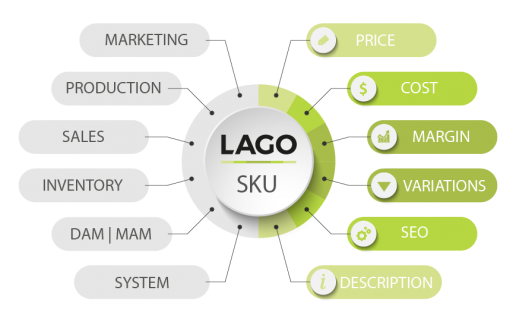4 Ways to Improve the Retail Customer Experience
4 Ways to Improve the Retail Customer Experience
To make the customer experience central to their marketing strategy, retailers must thrive in offline (print) and online digital channels.
The retail customer experience is not an easily definable event – or even a series of events. It’s a complex relationship, not a checklist of dos and don’ts. And, like all relationships, it takes time and effort to develop. In recent years, it has become more challenging. Since the emergence of e-commerce and smart devices, amplified by crises like the pandemic, today’s customers insist on a “shopping anywhere” world. Retailers have no choice but to meet them where they are. What was once a relatively stable environment for marketing and advertising directors is now more like the 2022 hit movie Everything Everywhere All at Once.
One of the critical elements to coping in this environment is the retailer’s ability to provide consistent messaging across a seemingly infinite number of platforms. Print-based marketing and advertising haven’t declined but have changed, increasing complexity and customization. And as online channels multiply, they, too, demand a flood of consistent messaging and product details. It seems overwhelming, but there are ways that retail merchandising planners and their IT manager partners can control that flow and improve the overall customer experience.
1. Go Beyond the Screen
The hybrid shopping experience has become a retail fact of life. Customers with smartphones frequently browse in brick-and-mortar stores, only to price check and even purchase the product they like on Amazon. But the real problem is not Amazon, per se. It’s that the brick-and-mortar chains’ smartphone apps are not as agile as those of their online rivals. Special offers and incentives from the print catalog or flyer are not reflected in the mobile app, and the customer’s experience finding and buying products in person and online is too often separate.
This need not be the case. As detailed in a recent case study, home improvement giant Lowe’s achieved remarkable results in multichannel marketing for its 2,000+ locations. They did so by deploying Comosoft’s LAGO system to integrate the company’s product information management (PIM), digital asset management (DAM), and other data systems with its marketing production hubs. The system allowed their merchandising planners to easily create customized versions of their printed materials and export the same offers and incentives to Lowe’s mobile app, which customers could use to locate specific products in the store.
2. Consistency and Customization
The bane of complex, multichannel marketing is the overwhelming sea of data that describes each product. With so much data per product, even a single promotion can involve intensive (and costly) manual efforts to ensure everything is correct. The LAGO system automatically pulls all the related product data from PIM, DAM, and other systems to reduce overhead and consistently promote the right products for a particular region. It also allows for regional variations in print and interactive digital publishing applications.
All this activity happens behind the scenes, of course. The shopper sees a consistent customer experience of the retail brand across multiple touchpoints.
3. Work With Emerging Technology and AI
The modern customer experience also includes a remarkable degree of personalization, allowing the retailer to tailor its promotions to the needs and buying behavior of demographic or regional groups—even down to the individual level. But all that “magic” is based on the wise and responsible use of big data.
By definition, retailers have access to enormous volumes of data, including product data from the original manufacturers (stored in PIM, DAM, and other repositories) and transactional and feedback information from individual customers. Putting that data to work is the real challenge. One way of doing so is with LAGO’s Direct Individualized Marketing (DIM) module, which matches known customer preferences with detailed product data to create personalized, one-to-one communication via print and digital channels.
Of course, discussing big data would only be complete with exploring the possibilities inherent in AI. Comosoft and DecaSIM revealed in a recent case study that AI tools can identify purchasing patterns, such as customer preferences for related products. When paired with LAGO’s ability to manage promotional campaigns, the AI tool enabled merchandising planners to make better product selections, significantly boosting store revenue.
4. Focus On the Product Experience
At the end of the day, a good customer experience depends on individuals finding the right product for them, being happy with their purchase, and developing a sense of loyalty to the retailer who made that possible. Over time, that relationship will lead to repeat purchases and increased word-of-mouth referrals.
However, replicating such positive, brand-building experiences for thousands of customers and millions of products means that the retailer must have high data agility. Their advertising and marketing teams must expertly juggle vast amounts of data, synchronized across multiple systems, customized to the regional, demographic, and even individual level, and delivered across various print and digital channels. They must also do so affordably and under enormous time constraints.
That level of data agility is possible only with systems like Comosoft LAGO.
Find out more about Comosoft LAGO’s unique, multichannel approach. Or book a demo to see for yourself.
Putting AI To Work: How Retailers Can Find More “Diamonds In the Rough”
Putting AI To Work: How Retailers Can Find More “Diamonds In the Rough”
Last month, we discovered that artificial intelligence, far from being a threat to retail marketing teams, is, in fact, an essential team player. The early results of using DecaSIM’s AI tools in conjunction with Comosoft LAGO showed that the two systems complement one another, each providing unique benefits for retail advertising and marketing directors. In this month’s article, we look at the two companies’ plans and what they mean for retailers of every kind.
Test overview
Recently, we tested the effect of using AI to optimize product selection in a regional grocery chain’s marketing campaigns. As reported in the published case study, the results were truly remarkable.
In the test, the regional grocery chain selected a 104-store region (out of over 300 stores) and, using Comosoft LAGO, created a specific version of its weekly ad circular to optimize during the test period. Each week’s promotional plan was run through DecaSIM’s AI optimizer during the test period. The analysis results were used to select which items to feature on each page of the circular. Compared with the sixty-five other stores chosen as a control group, the AI-assisted promotions increased sales by over $4,000 per store per week.
As AI improves profitability in the retail grocery sector, other retail chains can expect similar or even better results.
The importance of foot traffic
DecaSIM co-founder Doug Edmonds described a crucial factor in the grocery retail industry that is common to all retailers.
“All retail is trying to drive foot traffic, often with price as an incentive,” he said. “Whether you’re a grocery business or a home improvement retailer, if you depend solely on infrequent shoppers, you won’t survive.”
Edmonds continued, “Every retailer has a ‘core shopper group’ they must satisfy. Whether they’re buying tomatoes or socket wrenches doesn’t matter; their product preferences, shopping habits, and price sensitivity matter. Using AI to learn those things gives all retailers an edge. It will help them sell more to that core group. It will also grow that regular foot traffic over the long term.”
Comosoft’s US President Randy Evans noted that the grocery industry was only the beginning. “Grocery retailers have been using LAGO for years,” he said, “especially those chains that require regional versions of their weekly flyers and mobile shopping apps. We’ve always made it easy to prioritize offers, pull data from various sources, and streamline the design process across multiple stores. A fast turnaround is essential. But with DecaSIM’s AI tools, grocery advertising and marketing directors can know what products to prioritize in each campaign. It’s a slam dunk for our grocery clients, but our other retail clients can do the same thing.”
Diamonds in the rough
This use of artificial intelligence solves a problem facing all retailers—finding meaningful information in a mountain of product data. With thousands or even millions of individual products from many sources, retailers’ databases today are jammed with data related to each SKU. Typically, these reside in product information management (PIM), digital asset management (DAM), inventory, pricing, and marketing management databases. Too often, they are poorly integrated, forcing marketing heads and designers alike to hunt for detailed information for each product. This process is both time-consuming and prone to costly errors. With limited time and a seemingly unlimited array of print and digital channels, picking which products to feature involves a combination of intuition and guesswork.
LAGO’s unique ability to unify the PIM, DAM, and other data sources is part of the solution, creating a collaborative workflow, including both the design and the review and approval process. But even with a data-optimised, multichannel workflow, it still falls to the advertising and marketing directors to make priority decisions during the planning process. And even experienced planners may miss promotional opportunities amidst all that data.
Enter the AI part of the equation. DecaSIM’s artificial intelligence tools take data from each previous LAGO-driven campaign, identify patterns of core shoppers’ product preferences, and derive inferences and purchasing patterns, faster and with greater accuracy from that mountain of data. It then returns the results to LAGO, in effect “supercharging” the metadata used to create multiple versioned campaigns. AI can, in effect, find marketing diamonds amid raw data that would take humans too long to process.
Roadmap to marketing success
Comosoft Product Manager Steve May outlined what this could mean for future versions of LAGO.
“Today, campaign planners use our whiteboarding feature to create offers and product groupings that make the most sense based on margin, availability, and success in previous campaigns,” he said. “LAGO could add AI-generated weighted scores, relationships to other products, seasonal or regional patterns, and other useful indicators to featured products. They would still choose which ones to use but would be more informed marketing choices.”
By adding AI to LAGO, sales and marketing campaigns could be planned and executed at scale, with an objective knowledge of their sales potential. Far from taking jobs away from retail marketing professionals, AI would serve as a highly efficient research assistant, gathering objectively valuable information that the planner would use to create effective campaigns.
“Today, people are nervous about AI and what it will do to their careers,” Evans said. “In the case of retail marketing, it’s pretty obvious that AI is an ally in our data-intensive world.”
Can AI help retail?
Can AI help retail? A no-nonsense strategy for success in the AI revolution
A mere eleven months ago, OpenAI launched the public version of its AI-based, large language model, ChatGPT. In that short time, the noise surrounding AI has dominated the media, boardroom conversations, and almost every social gathering on the planet. Retail advertising and marketing directors everywhere are inundated with questions. “What are we doing about artificial intelligence – and how will we survive without it?”
Thankfully, Comosoft and its AI development partner, DecaSIM, have a practical answer. They now offer a clear path for retailers searching for real-world AI solutions, relieving the pain of turning vast amounts of complex data into meaningful, more cost-effective marketing campaigns. In a recent case study, a leading regional grocer implemented a live test of Comosoft’s marketing automation system, LAGO, in combination with DecaSIM’s AI-based data analysis tools, generating positive results from week one. By optimising which promotions to feature in its advertising and creating more customer engagement, the company demonstrated increased weekly sales and an eight percent increase in EBITDA profitability.
Artificial intelligence for the rest of us
Much public anxiety over AI stems from common misperceptions about the technology. ChatGPT and other “generative” AI systems often look for patterns in vast amounts of unstructured data – meaning there are no preexisting identification tags or metadata to help us sort or classify them. The Comosoft/DecaSIM AI model is based on a smaller set of structured data, such as the known purchase history of specific products, prices, and seasonal buying patterns. The AI tool uses the data to solve equations to create new (and precious) metadata describing shoppers’ behavior and preferences about specific products.
In other words, the AI is finding meaningful inferences from the data based partly on the domain knowledge of advertising and marketing professionals. It does so with volumes of data that, while not as vast as the trillions of data parameters required by generative AI systems like ChatGPT are still too large for humans to analyse without help.
All this puts the Comosoft/DecaSIM approach in the category sometimes known as “Narrow AI,” or artificial intelligence designed to perform specific tasks. This differs from purportedly self-aware, artificial general intelligence or AGI, which is still hypothetical at best. However, since simplified tasks are critical to retail success, advertising and marketing directors have little to fear and much to gain. The belief that AI is taking over from humans is offset by a growing awareness that AI can be a critical part of any retail marketing team.
During the testing process with retailers, DecaSIM co-founder Chris Antipa noted that advertising and marketing departments are finding their work enhanced, not threatened.
“There’s always this natural pushback, with people saying, ‘Hey, computers are coming for my job.’ But as time passes, they begin to understand what the AI is doing for them and talk about the platform as a teammate. They even joke that they should give it a nickname.”
Putting AI to work
The combination of DecaSIM’s AI tools and Comosoft LAGO can only be described as a high-impact data solution. LAGO already automates various vital functions for retailers, including integration of campaign planning, numerous data sources, and streamlined production of print and digital campaigns – including multiple regional versions of each catalog, flyer, or digital equivalent. Using AI elevates that process even further. Historically, structured data from LAGO and other sources are fed to the DecaSIM system, deriving meaningful shopper habits and preferences for specific products and product categories. This enhanced metadata is fed back into LAGO, providing an objective basis for promoting particular products at specific locations and times of the year.
The results have been remarkable. Co-founder Doug Edmonds recounted the response of one retail executive, who said the DecaSIM/LAGO combination “made every ad like a holiday ad,” thanks to the system’s ability to anticipate shoppers’ preferences and product attributes. “The data we utilize contain context and meaning hidden to most of the retail world,” Edmonds continued. “AI uses those data to define that context and meaning, rate its importance, and add all that to the metadata for each product and category.”
The LAGO approach, which integrates marketing-relevant data from product information management (PIM), digital asset management (DAM), and other sources, is ideally suited to optimise the new DecaSIM data. “Traditionally, more than half of our implementations start with some rich data feed,” said Comosoft Product Manager Steve May. “Typically, this is a collection of product SKUs, digital assets, and offers. With DecaSIM, the data are enhanced before we even get it.”
This is especially important to advertising and marketing directors at the planning stage of a campaign. LAGO’s whiteboarding capability already gives them an overview of which products to feature prominently based on criteria such as regional availability, profit margin, and sales history. With the addition of DecaSIM data, they also can have reliable indicators of what shoppers will more likely purchase, including their preferences for related or alternative products.
“LAGO and DecaSIM are both ‘painkillers’ for retail advertising and marketing professionals,” said Comosoft US President Randy Evans. “One stops the pain of integrating PIM, DAM, and other data to execute campaigns at scale. The other removes the guesswork of which products are more likely to sell.”
The future of AI in retail marketing
The success of this approach is not limited to the grocery market. Retailers depend heavily on regular foot traffic and a known population of frequent shoppers – a dimension that fits everyone from home improvement and hardware retail chains to fashion and lifestyle brands. Knowing objectively what shoppers want and advertising accordingly is a holy grail for all retail marketers – one that DecaSIM’s AI can find and LAGO can implement, even down to the local level and on multiple print and digital platforms.
The two companies are actively engaged in combining and expanding these capabilities shortly. Some of these enhancements will be the subject of next month’s article.
Growing e-commerce with print? Yes, please.
Growing e-commerce with print?
Yes, please.
Yes, please.
Life without e-commerce is inconceivable today. Even in a retail store or shopping mall, it’s common to reach for our phones to compare prices or check on the availability of something in a different color or size. Brick-and-mortar store managers may resent it, but mobile e-commerce is here to stay.
But it’s also no surprise that retailers continue evolving their marketing strategies, supporting a consistent customer experience across every channel. Both brand identity and product promotion details must be consistent, regardless of the device or medium is used. That requirement is essential to marketing and advertising directors – and the production and creative managers who get the job done – whenever they coordinate retail campaigns in their print and mobile shopping iterations.
Faced with the need to optimize marketing spending, retailers are expanding and enhancing their traditional print advertising strategy. Weekly circulars and product catalogs are no longer just standalone elements. They now must be totally in sync with their mobile shopping app counterparts. All the elements of a featured product – images, brand elements, even color and size choices – must be consistent across every channel and customer experience, even down to the local store level.
Even more critical, the printed elements of a campaign must also serve as a “launching pad” for the mobile e-commerce experience. Catalogs, circulars, and flyers can no longer be merely informative and persuasive displays. They must also make it easy for customers to order products on the spot. Of course, the easiest way to do that is to print a QR Code next to the featured product, but doing so efficiently can be challenging.
It’s all in the data
QR Codes can be generated easily for each product SKU and then stored, like any other image, in a Digital Asset Management or DAM system. Each code can take the catalog or flyer reader directly to the retailer’s e-commerce ordering page for that specific product, dramatically shortening the sales cycle and providing immediate feedback on the print campaign’s effectiveness.
But while the print-to-e-commerce-purchase cycle is easy to understand, it can be difficult to implement on a large scale. With dozens or hundreds of SKUs in every print marketing campaign, plus the need for multiple regional versions of each printed piece, it takes a lot of work to keep all that DAM and Product Information Management (PIM) data straight. It’s also a challenge for designers to manually assemble all that data and imagery into a single ad—not to mention a catalog or flyer featuring multiple products.
Fortunately, the LAGO system was designed to do precisely that. Using an InDesign plugin, designers can easily and automatically assemble all the PIM and DAM elements related to any SKU in the retailer’s marketing campaign, focusing their time on designing the catalog or flyer—and not hunting for all the pieces. One of those “pieces” in the DAM system can easily be the QR Code for that SKU. Thus, the designer doesn’t have to test or worry about whether the QR Code is correct. They focus on design.
LAGO can do even more than that, of course. For example, if a retailer needs to create different versions of a piece with regional price or product variations, doing so is simple and effective. And because LAGO’s digital output supports versioned pages, including product hotspots and QR Codes, even complex, multi-region retailers can easily transition their print campaigns to digital, creating content for multiple channels with data that increasingly resides in the cloud.
On beyond print
Once a print layout is created in LAGO – for a single catalog or multiple regional versions—the journey is not over. All the related PIM and DAM data can also populate e-commerce websites and mobile shopping apps. During the layout process, designers can designate product hotspots, which are not used in the printed output, naturally, which allow the online output to contain live links to the e-commerce ordering portal, to use just one example.
Product hotspots have many other uses, including triggering multiple image galleries, special offer overlays, size and color variations, alternate text descriptions, and more. These elements have the advantage of being connected to a product’s PIM and DAM data, so the designer need not spend hours figuring out how the online version will behave.
The necessary PIM, DAM, and other data to required accomplish these tasks are increasingly located not in local servers but in the cloud. This is especially true for large, multi-region retailers but is also becoming the norm for marketing departments in every industry. Fortunately, LAGO and its components can easily be cloud-based, offering IT departments increased flexibility and scalability.
Once the main layout is created, LAGO can export the results to multiple formats, each appropriate to the required print or online channel. In addition, it can automatically generate XML and JPEG/PDF for selected pages based on the desired multichannel output workflow. With so many channels in constant need of consistent, well-formed content, LAGO has proven to be a reliable workhorse for retail marketing and advertising operations.
Finally, no discussion of multichannel marketing would be complete without mentioning the growing arena of dedicated retail shopping apps. Like all other online channels, shopping apps need to be constantly updated with the latest product information and marketing campaigns. Fortunately, LAGO can export all campaign data directly, including regional variations, to populate the retailer’s own website or mobile app, creating product location and pricing aids based on LAGO’s versioning capability. One such retailer, home improvement chain Lowe’s, used the LAGO system to create its multi-version printed flyers and, by exporting the resulting campaign data to third-party developer FLIPP, allowed them to create an extremely precise and effective mobile shopping app.
Conclusions
Print and online are not mutually exclusive, either-or choices for marketing and advertising directors and their teams. Used well, print is the perfect vehicle for enhancing and extending the interactive online shopping experience. By using the LAGO system, well-designed print output will attract and motivate shoppers and lead them to buy more frequently online – growing your e-commerce presence exponentially.
PIM-Point Accuracy
PIM-Point Accuracy
When a retailer has hundreds of thousands of SKUs and over 2,000 stores, how can it leverage all that data effectively—and profitably—in its public marketing efforts?
Enterprise databases are not built from scratch. They certainly do not spring into existence fully-formed, complete with a high-profile launch event. Rather, these dinosaurs of the IT world evolve slowly—and successfully—from their primordial ancestors. Engineered to handle huge volumes of complex data, such systems are powerful enough to support large, complicated businesses.
This awesome power comes at a cost, however. Because they have evolved from previous, often arcane systems, enterprise databases are notoriously slow to adapt to changing market conditions and disruptive new technology.
So Many SKUs, So Little Time
Such is the case with Product Information Management or PIM systems. When a company manufactures or sells a product, data from a PIM are used to keep track of every aspect, from colors, size variants, and part numbers to serial numbers, optional accessories, and specifications. Each item, known as a Stock Keeping Unit or SKU, also has pricing information, inventory levels and locations, manufacturing details, and a host of marketing data. The latter, usually product descriptions, photos, and even videos, are kept in a separate but somehow related database called a Digital Asset Management or DAM system.
That’s a lot of data. For each SKU, there may be dozens or even hundreds of data points. Usually, these not all in the same database but spread over several related but very different systems. Each has its own, important business purpose and each much share information in order to manage that particular product. One particular department—product marketing—must access almost everything related to a particular SKU.
Now, multiply that problem by 400,000.
Home improvement retail giant Lowe’s handles that number of products and more, selling them from any of its 2,000 stores—plus its online sales portal. To market this vast array of products successfully, the company must find a way to leverage millions of data combinations—and do so in a way that guides the shopper to just the right product at just the right price.
Up to the Challenge
In August, Multichannel Merchant published a case study describing how Lowe’s and PureRED (Lowe’s digital agency) were able to solve a complex, data-intensive marketing problem — the retail circular. Using the LAGO system from Comosoft, product marketing managers and designers were able to identify and prioritize SKUs for a campaign and, using data from both PIM and DAM systems, import each product into a well-designed Adobe InDesign template.
Much of the detailed circular production work (e.g., formatting and populating tables, finding the right product image) became highly automated. Pricing and other data were linked to the original data source, so a last-minute change to the latter would automatically update the former—right up to the moment the file was generated for the printer. The potential for errors was greatly reduced.
The massive data juggling act at Lowe’s is even more impressive when you consider that each individual store circular, although similar in overall design, is unique in terms of featured products and sale prices. Multiply each data-intensive printed circular by the over 2,000 Lowe’s stores that use them on a daily basis.

The Digital Shift
The PIM/DAM dilemma would be hard enough if printed circulars were the only marketing channel. (LAGO is also used for other complex, versioned print products, notably catalogs.) However, digital marketing—especially mobile apps—have upended the plans of most retail marketers. A digitally produced circular ad must not only be attractive, informative, and easily findable, it must also be an “E-Z button” for buying the item.
Think about it. An ad for a screwdriver set on a store’s mobile app not only has to show the user what it is, and how much it costs (with prices changing at any moment), but also similar items, customer reviews, and whether it’s in stock or available for delivery.
That’s a lot of data. Fortunately, as the case study shows, the same PIM/DAM data acrobatics used to streamline print circular production could be repurposed to populate the Lowe’s mobile app.
Reaching the Target
By definition, product marketing must be nimble and responsive to consumer habits and preferences. Online and mobile tools are ideal vehicles for connecting with today’s customers. However, only if the massive amounts of product data can be accurately and cost-effectively managed—behind the pretty face of an ad or app—can the targeted message reach the consumer.




